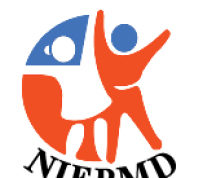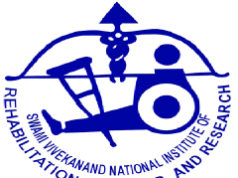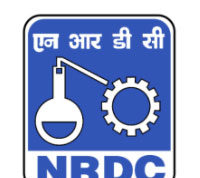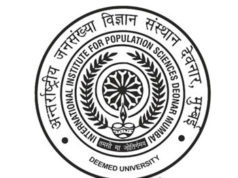
 T. Dileep Kumar
T. Dileep Kumar
President
Indian Nursing Council
Dr. Punitha Ezhilarasu
Consultant
Indian Nursing Council
GROWTH OF NURSING IN INDIA:
HISTORICAL AND FUTURE PERSPECTIVES
Nurses are two-thirds of health workforce in India. Their central roles in health care delivery in terms of promotion, prevention, treatment, care and rehabilitation are highly significant. Their contributions towards achieving UN millennium development goals (MDG) and sustainable development goals (SDG) are very crucial but not sufficient enough particularly in developing countries like India to create major impact on health outcomes. Achieving universal coverage, increasing health financing, recruitment, training and retention of health workforce are two important goals that have direct relevance to India. Nursing today has witnessed several changes, successes and challenges through a lot of stride and movement. Nurses have widened their scope of their work, however while the roles and responsibilities have multiplied, there are still concerns with regard to development of nursing, workforce, selection and recruitment, placement as per specialization, pre service, in service training and human resource (HR) issues for their career growth. This paper attempts to present the futuristic nursing in the light of historical and contemporary perspectives.
Historical perspectives
Nursing and Nursing Education
In the ancient era, until 17th century, formalized nursing was not traced. Every village had a dai/traditional birth attendant to take care of maternal and child health needs of the people. Military nursing was the earliest type of modern nursing introduced by the Portuguese in the 17th century. In 1664, East India Company started a hospital for soldiers at Fort St. Geroge, Madras. In 1797, a lying-in-hospital (Maternity) for the poor in Madras was built. Some of the other earliest hospitals were the first hospital in Calcutta in Fort William (1708), Calcutta medical college hospital and London mission hospital at Neyyoor (1838), Jamsetjee Jeejeebhoy (J.J) group in Mumbai (1843), Thomasan hospital at Agra (1853), Holy Family Hospital, Delhi (1855), Civil hospital Amritsar (1860), CMC, Ludhiana, Punjab (1881), 1892 Miraj medical school and hospital, Maharashtra (1892) and Bowring hospital in Bangalore (1895).
Florence Nightingale was the first woman to have great influence over nursing in India and brought reforms in military and civilian hospitals in 1861. St. Stevens Hospital at Delhi was the first one to begin training Indian women as nurses in 1867. In 1871, the government General Hospital at Madras was started with the first school of nursing for midwives with four students. Many nursing schools were started in different states of India between 18th and 19th century mostly by mission hospitals, which trained Indians as nurses. At this time there was no uniform educational standards followed in nursing schools. In 1907-1910, in North India, United Board of Examiners for mission hospitals was set up which formulated training standards and rules. Later Mid India (1926) and South India (1913) boards (boards of CMAI) were set up which conducted examination and gave diplomas. The first school of Health visitors was started in 1918 by Lady Reading Health School, Delhi. The first four-year Basic B.Sc. program was established in 1946 at RAK College of Nursing in Delhi and CMC College of Nursing in Vellore. In 1960, M.Sc. was established in RAK College of Nursing, Delhi. In 1951, a two-year ANM course was established in St. Mary’s Hospital at Punjab.
Bombay Presidency Nursing Association was the first state nursing association established in 1890. In 1908, the Trained Nurses Association was formed to uphold the dignity and honor of nursing profession. The first state registration council at Madras Nursing Council was constituted in 1926 and Bombay Nursing Council was constituted in 1935. In 1949, Indian Nursing Council (INC) was established to maintain a uniform standard of training for nurses, midwives and health visitors and regulate the standards of nursing in India. INC act was passed in 1947 that was amended in 1950 and 1957. General Nursing and Midwifery (GNM) syllabus was revised in 1951, 1965, and 1986, ANM in 1974 and B.Sc. in 1981.
The nursing scenario at the time of independence was not bright and there were about 7000 nurses for the population of 400 million. The hospitals were grossly understaffed, nursing lacked professional and social status, and the working and living conditions of nurses were far from satisfactory. The low status can be attributed to the low socio economic status of Indian women and nursing is primarily a women’s profession. In the fifties, more number of girls from different parts of the country joined nursing and slowly there are more entrants from better socioeconomic status. By 2000, nurses’ colony at Delhi was built by Central government; nursing advisor post was instituted at the national level; three nursing posts were increased to five with the introduction of Asst. Director General Nursing and Dy. Asst. Director General. The College of Nursing PGI, Chandigarh and College of Nursing, CMC Vellore were designated as WHO collaborating centers for nursing and midwifery development in 2003.
The development of various committees such as Bhore Committee (1943), Shetty Committee (1954), Mudaliar Committee (1959-61), Kartar Singh Committee (1973), Srivastava Committee (1974), High Power Committee (1987) alongside five year plans have brought about a transition in the status of nursing and midwifery. The recommendations made were in relation to staffing in hospital nursing service, public health settings, and schools/colleges, working and living conditions, infrastructure and equipment, regulations, and intensification of training programmes to meet the staff shortage. The reports of the above mentioned Committees and National Health Policy (NHP, 2002) have put forward very sound recommendations for nursing management capacity. The NHP laid emphasis on improving the skill-level of nurses and on increasing the ratio of degree-holding nurses vis-à-vis diploma-holding nurses. It also recognized the need for establishing training courses for super-speciality nurses required for tertiary care institutions. However, gap existed in actual implementation. This required a strong support at the policy level to ensure implementation of key recommendations.
Following independence, reorganization of the health services took place in the light of the Bhore Committee recommendations (1946). Health services were provided in the rural areas through the establishment of primary health centre (PHC) as a basic unit to provide an integrated curative and preventive health care for the population of 30,000 in the plains (20,000 in hilly areas). The staffing pattern of the PHC was not implemented fully as per the Bhore Committee with regard to nursing until now. As per the Bhore committee’s recommendations, the nursing staff of PHC includes Public health nurses – 4, Institutional nurse -1, Midwives – 4 and Trained Dais – 4. In 1952, a post-certificate Public Health Nursing programme was instituted at the college of Nursing, New Delhi and later transferred to All India Institute of Hygiene and Public Health, Calcutta. Community health nursing was integrated in the curriculum of GNM and BSc Nursing courses.
From 1977-till date, with the introduction of Multipurpose Health Worker’s Scheme following Kartar Singh’s Committee report in 1973, most of the categories of staff under various unipurpose programmes were re-designated for multipurpose work. Until recently, most of the health services in the homes were provided by the Health workers, health visitors, ASHAs and Trained Dais whose activities were and are still concerned primarily with maternity and child welfare. The auxiliary nurse midwife (ANM) gradually replaced the Dais to serve in the village through the primary health centre and its sub-centres. Under NRHM scheme in 1996, every PHC was manned with 2 staff nurses to provide RCH services. In 1977, the Indian Nursing Council revised the curriculum for ANM course, in order to prepare candidates with high school certificate as Health workers (Female) and Health workers (Male) under the multipurpose health workers’ scheme. The formulation and adoption of the global strategy for “Health for All” by the 34th World Health Assembly in 1981 through Primary Health Care approach got of a good start in India with the theme “Health for All” by 2000 AD. In 1987, The Government of India appointed a High Power Committee on Nurses and Nursing Profession to go into the working conditions of nurses, nursing education and other related matters and submitted manpower requirements for nursing personnel.
Contemporary Perspectives
Nursing and Nursing Education
The current healthcare environment is dramatically different from the past and it is the health system that shapes the educational system and pathways. The complexity of the healthcare influenced by the increasing longevity, shortening of hospital stays, scientific and technological advances, equality, poverty, discrimination, disasters, violence and cultural diversity leads to several challenges that threaten the health and wellbeing of the Indian Population. Currently India has only 0.7 doctors (Global average is 1/1000) and 1.7 nurses (Global is 2.5/1000) available per thousand population. The ratio of hospital beds to population in 0.98/1000 against the global average of 3.5 beds/1000 population (WHO). India stands at 67th rank against 133 developing countries with regard to number of doctors and 75th rank with respect to number of nurses. The Physician Nurse ratio is not satisfactory. Thus, International Nurse is 1:3 whereas India is having 1:1. The country needs 2.4 million nurses to meet the growing demand (FICCI report, 2016). The HLEG (High Level Expert Group) group report on UHC (Universal health coverage India) 2011 is increased reliance on a cadre of well- trained nurses, which will allow doctors to focus on complex clinical cases.
The roles of nurses are evolving and changing. Nurses can perform health assessment, actively support patients and families in all settings, create innovative models of care, and enhance work processes to raise quality, lower cost and improve access for our society. Nurses can undertake research to find evidence to support new nursing interventions. Nurses can contribute towards strengthening systems to work efficiently in interdisciplinary teams. They can effectively participate and influence policies related to nursing at local, state and national levels. There is a rising demand in terms of manpower for tertiary and quaternary care, which requires specialized and highly skilled resources including doctors, nurses and other paramedical staff. This is also emphasized in NHP 2017. As a result, the demand for trained manpower, especially nurses will continue to increase every year. The number of registered nurses/midwives was 6.7 lakhs in 1998 and has reached 17,91,285 nurses/midwives in 2014.
In India, nursing educational programs such as Auxiliary Nurse Midwifery, General Nursing and Midwifery, BSc(N), MSc(N), MPhil and PhD(N) exist. INC prescribes uniform standards and syllabi for every educational program to be implemented across the country. However, the implementation by educational institutions having varied capabilities is not uniform resulting in graduates with varying knowledge, attitude and competencies. The last syllabus revision for ANM was done in 2012-13, GNM 2015-16, B.Sc- 2006, PBBSc- 2006 and M.Sc 2008. The growth in nursing educations is phenomenal. From 2000 to 2016, ANM schools have increased from 298 to 1927, GNM schools from 285 to 3040, B.Sc colleges from 30 to 1752, and M.Sc colleges from10 to 611. Although the increase is significant still there is gap between demand and supply. The 12th five-year plan suggested establishing 24 centers of excellence in nursing. The HR efforts included up gradation of schools to colleges, strengthening of existing schools, faculty development, and establishment of 6 AIIMs like institutions.
Some of the INC initiatives and achievement include capacity building of 55 nursing educational institutions, training of 1,20,000 nurses and 3500 faculty in HIV/AIDS & TB through GFATM project. E Learning module was developed as a result of this project. A Live register is being developed for all categories of nurses. Every registered nurse will be provided with a nurse unique ID (NUID). The register will lead to development of a nurse tracking system across the country and aid in reciprocal registration alongside renewal of license linked with CNE. INC has become a member of ICN. A national consortium for PhD in nursing was constituted by INC in 2006 in collaboration with Rajiv Gandhi University of Health Sciences. The main objective is to promote research activities in various fields of nursing. The total number of research scholars enrolled in 12 batches is 268 and 74 have been already awarded Phd degree. There are 8 PhD study centers now namely INC, New Delhi, St John’s College of Nursing, Bangalore, CMC College of Nursing, Vellore, CMC College of Nursing, Ludhiana, Govt College of Nursing, Hyderabad, Govt College of Nursing, Thiruvananthapuram, Govt College of Nursing, SSKM Kolkata, and INE, Mumbai. INC is in collaboration with JHPIEGO has taken initiative to strengthen the foundation of pre-service education resulting in better prepared service provider. In order to promote competency based training INC in collaboration with JHPIEGO is going to set up state of the art simulation center in India.
There is a scope for improving living and working conditions of nurses in the future. Through the efforts and representation by TNAI, Supreme Court has recommended minimum salary of 20,000 per month as starting salary of a staff nurse in private hospitals. Some states have developed mechanism to conduct and record CNE through State nursing councils. Integration of service and education model that is practiced in CMC Vellore is also introduced in a few more institutions particularly in St Johns College of Nursing, Bangalore. INC is in the process of developing a practical model for the country. Florence Nightingale awards instituted by MOH & FW in 1973 to recognize and honor the meritorious services of outstanding nursing personnel in the country are given to 35 nurses every year on May 12, the International Nurses Day. This award includes a medal, certificate, citation and cash award of Rs. 50,000/-.
Some of the top nursing colleges in India today are established in the earliest days and are continuing to maintain standards and quality of education. AIIMS College of Nursing Delhi, CMC College of Nursing Vellore, RAK College of Nursing Delhi, SNDT College of Nursing Mumbai, NIMHANS Bangalore, Manipal College of Nursing Manipal, PGI College of Nursing Chandigarh, AFMC College of Nursing Pune, , BM Birla College of Nursing, Kolkata, , St John’s Bangalore, Govt College of Nursing Thiruvananthapuram, CMC College of Nursing Ludhiana, Father Muller College of Nursing Mangalore, Sri Ramachandra Medical University College of Nursing Chennai, and Apollo College of Nursing, Chennai are some of the top colleges of Nursing today. Many universities are running PhD programmes in nursing and many colleges have been recognized as research departments.
Public Health Nursing
According to the Indian Nursing Council (Snapshots, 2016), 789,740 ANMs and 56,096 LHVs are registered in the different state nursing councils of the Country. About 2.00 lakh ANMs (Auxiliary nurse midwives) and thousands of female health supervisors and public health nurses are working in the public health sector alone. They are responsible for implementing all national and state health programmes at ground level. Critical activities related to maternal and child health, disease control, immunization, epidemic management and health promotion are carried out by peripheral public health nursing personnel. The training of public health nursing personnel varies widely ranging from a broad multipurpose training of less than two years for ANMs to six years education at university level to prepare community health nursing specialists. Currently, community health nursing is offered as a subject in the ANM, GNM (general nursing and midwifery), post-basic B.Sc. Nursing, regular four-year B.Sc. Nursing and M.Sc. Nursing.
The scope of public health nursing is wide in India and their potentials are not fully utilized in our country. Currently, public health nurses at PHC, Block and district levels plan, monitor, and mentor peripheral health staff to implement programmes on health promotion and disease prevention. The Bhore Committee gave a strong recommendation for introduction of public health nurses and the Mudaliar Committee reiterated this. Rather than moving forward into a professional cadre, public health nursing in India became stagnant at the lowest level of ANM due to the political and economical reasons. Shortage of nurses and its impact on the Indian health care delivery system remains a major concern to this day. Adding to the above problem, there is an undersupply of competent public health nurses who are willing to serve in the resource-limited community health care settings.
Future Perspectives
The future of healthy India lies in mainstreaming the health agenda in the framework of the sustainable development and strengthening primary, secondary and tertiary care services to serve the rural (70%) and urban (30%) population. NHP 2017 recommends setting up new Medical Colleges, Nursing Institutions and AIIMS in the country by the government, standardization quality of clinical training, revisiting entry policies into educational institutions, ensuring quality of education, continuing nursing education and on the job support to providers, especially those working in rural areas using digital tools and other appropriate training resources, strengthening human resource governance, regulation of practice, establishing cadres like Nurse Practitioner and Public Health Nurses, specialty training for tertiary care, nursing school/college for 20-30 lakh population, HR policy for faculty, centers of excellence in nursing in each state, career progression to nursing cadre and posting of regular nurses to sub-center in the state where adequate nursing institutions are present. The policy also recommends the use of mid-level service providers to provide comprehensive primary care to the rural community through Health and Wellness centers/Sub centers. Nurses can assume this role provided they undergo a six month bridge course.
In the light of the above recommendations pertaining to nursing and nursing education, INC has prepared curriculum for Nurse Practitioner (NP) programmes in Critical Care and primary care. NP in Critical Care (NPCC) programme is commencing from 2017 and NP in Primary Health Care (NPPHC) from 2018. Both are residency programs aimed at providing clinical training at the real practice settings. State governments are communicated by central government to create posts for nurse practitioners at the state level. The revision of existing BSc and MSc curriculum are being planned to integrate competency based education approach and the process has just begun. The regulation of nursing education and practice will be strengthened through Nursing Practice Act (NPA) for which INC at the direction of the MOH &FW has started the preparation and soon it will be ready. National license exit exam for entry into practice, periodic renewal of license linked with continuing nursing education, and completion of live register are some of the future activities.
Studies of nursing practice have demonstrated that better patient outcomes are achieved in hospitals and community staffed by a greater proportion of nurses with a baccalaureate degree (Benner, Sutphen, Leonard, & Day, 2010). Phasing out diploma programme and making BSc as entry level is being dialogued and this might become a reality in the future too. The WHO strategic directions for nursing and midwifery (SNDM) 2011 – 2015 provide stakeholders with a framework for collaborative action with the vision statement “Improved health outcome for individuals; families and communities through provision of competent, culturally sensitive, evidence based nursing and midwifery services. This should become the future for nursing.
Bibliography
Benner, P., Sutphen, M., Leonard, V., & Day, L. (2010). Educating nurses : A call for radical transformation. Danvers, MA: Wiley
- – FICCI Report, 2016
- – Indian Nursing Council, 2016
- – Indrani,TK (2004). History of Nursing, New Delhi: Jaypee Brothers
- – National Health Policy, 2002 & 2017
- – Trained Nurses’ Association of India (2001). History and Trends in Nursing in India, New Delhi: TNAI


























